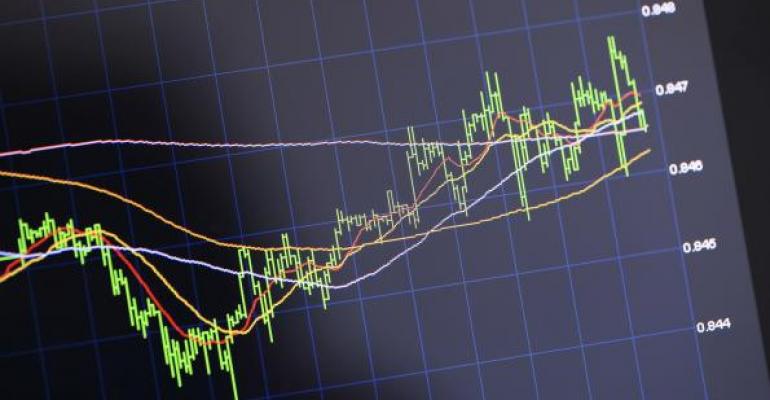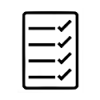How were your portfolios tilted before the COVID-19 meltdown? Did you allocate to low- or minimum-volatility? Or were your assets geared, instead, to momentum? It’s a fair question to ask because, on a 12-month basis, momentum beats minimum volatility.
You read that right. Momentum’s still the king, though of a rather meager realm. Take a look at the chart below.
One Year Performance (As of 24 April 2020)
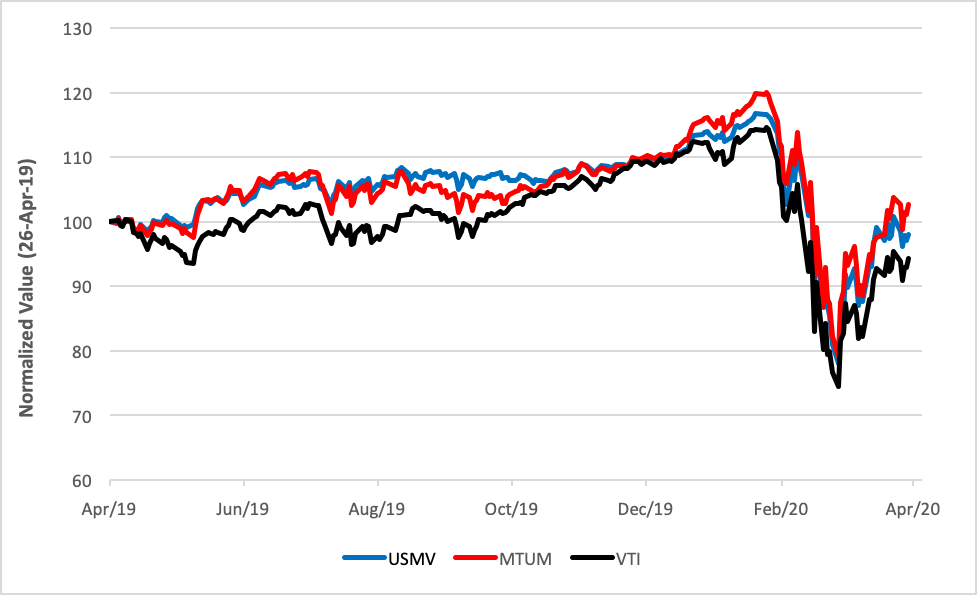
Restrained volatility is represented by the iShares Edge MSCI Min Vol USA ETF (Cboe BZX: USMV) while the momentum tilt is expressed through the iShares Edge MSCI USA Momentum Factor ETF (Cboe BZX: MTUM). The Vanguard Total Stock Market Index Fund ETF Shares (NYSE Arca: VTI) is shown for contrast.
Notably, only MTUM is above water on a 12-month basis. Not by much, mind you. MTUM is up as much as USMV is down; only about 2%. Still the difference is significant, given that the broad market represented by VTI is off nearly 6%.
For the Vanguard suite of single-factor funds, the disparity is more pronounced. And disappointing.
One Year Performance (As of 24 April 2020)
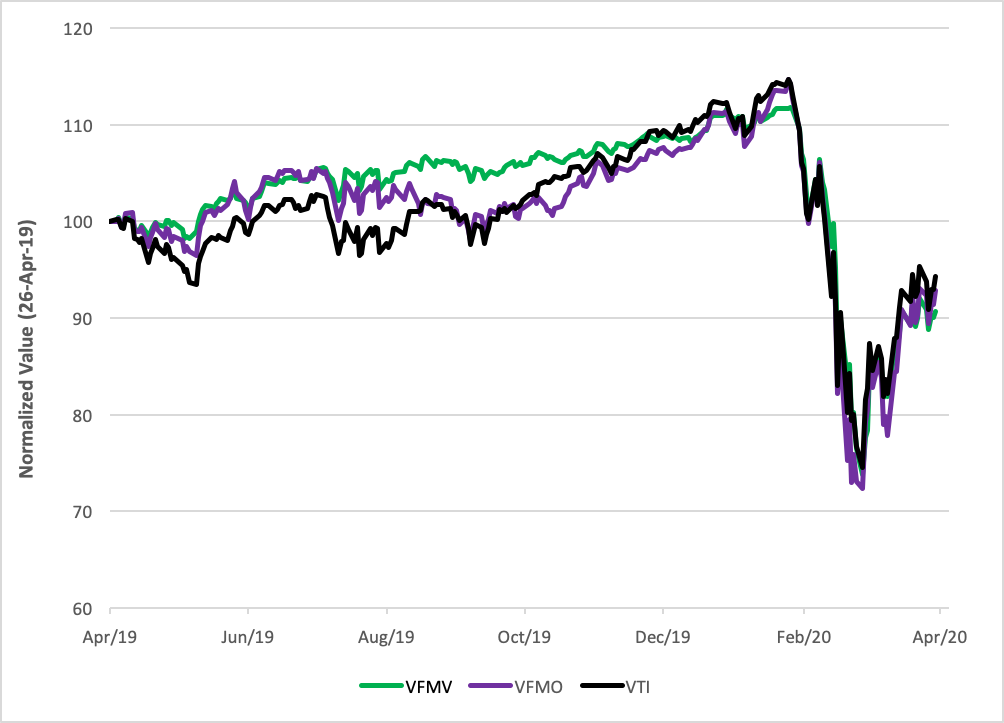
While it’s true Vanguard’s momentum factor ETF outperformed its minimum volatility stablemate, both funds lagged the total market. In this chart, all three funds remain underwater.
So what accounts for the disparate results?
First and foremost, the Vanguard factor funds are actively managed; the iShares products are not. Second, the iShares suite has a decided large-cap tilt. Vanguard’s all-cap approach lends a mid-cap feel to its funds.
Vanguard’s advisor—the same fellow runs both funds—follows a rules-based, quantitative model to populate his portfolios. The model’s proprietary, so the methodology isn’t transparent. Suffice it to say that the minimum volatility product selects securities exhibiting relatively strong recent performance, subject to a set of constraints aimed at enhancing diversification and liquidity. The momentum fund’s stock mix is built with issues showing increases in 6-month returns over their 12-month returns.
The index methodology for the iShares minimum volatility fund centers on an optimization algorithm that looks at the correlations of its candidate stocks to curtail variance. The momentum fund utilizes a regimen similar to Vanguard’s to define its universe of candidates but weights the resultant portfolio on the basis of the constituents’ volatility over the past 3 years.
Momentum ETFs, no matter their stripe, have generally outdone their low-volatility siblings over recent time frames. The current bearish cycle began with the breakdown from the peak attained February 20 and reached its nadir on March 23 with broad market losses, expressed through the VTI fund, of 35%. Consistent with common experience, momentum funds suffered greater losses than the minimum volatility products. Losses for both iShares factor funds were smaller than the hit taken by the broad market, while the Vanguard portfolios were a mixed bag.
In the sharp upturn that ensued, momentum funds led the low-vol ETFs, as well as VTI, to the upside.
For the full up-down cycle, Vanguard’s momentum fund did marginally worse than its minimum volatility portfolio. For the iShares pair, the opposite is seen: momentum trumps low-vol. To boot, both iShares ETFs stomached significantly smaller losses than that suffered by the broad market.
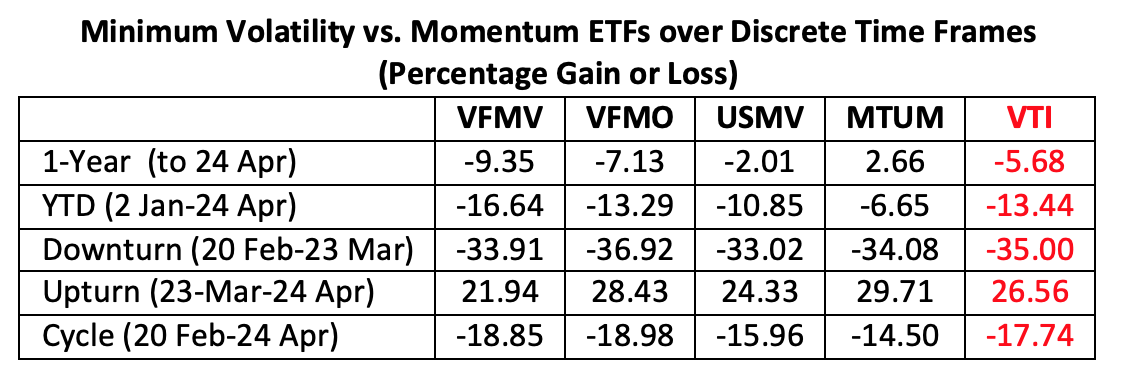
For those keeping score in the active-passive debate, this round goes to indexing. The more salient point, perhaps, is that momentum hasn’t lost its mojo. Not yet, at least.
Brad Zigler is WealthManagement's Alternative Investments Editor. Previously, he was the head of Marketing, Research and Education for the Pacific Exchange's (now NYSE Arca) option market and the iShares complex of exchange traded funds.

